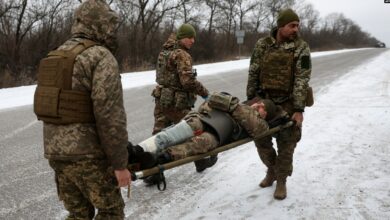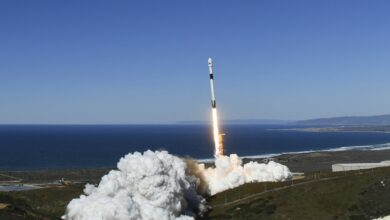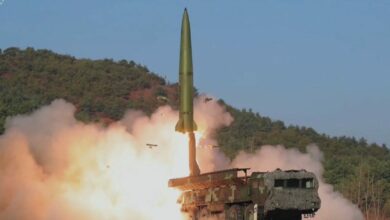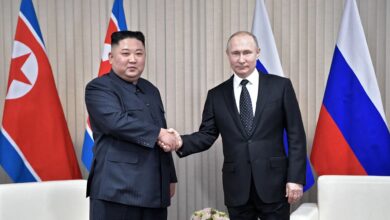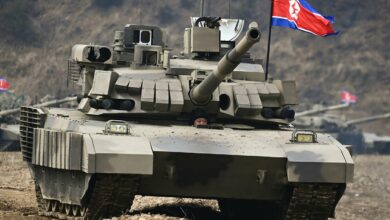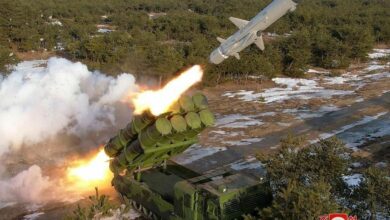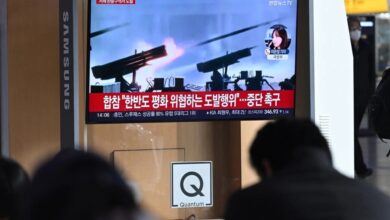Machines Not Missiles on Show at North Korea Anniversary Parade
Earlier this year, leader Kim pledged to place "the state defense capabilities on a much higher level, and put forth goals for realizing it."
North Korea put tractor-towed artillery, fire engines, and health personnel in orange hazmat suits on show at a parade in Pyongyang early Thursday, rather than the more usual tanks and ballistic missiles.
Pyongyang has continued to pursue its nuclear weapons and ballistic missile programs — for which it is internationally sanctioned — during the diplomatic engagement of recent years and often uses military parades to show off its latest developments.
At the last one in January — days before Joe Biden‘s inauguration as US president — submarine-launched ballistic missiles rolled through Kim Il Sung Square in front of a grinning Kim Jong Un, with the official KCNA news agency describing them as the “world’s most powerful weapon.”
But Thursday’s “paramilitary and public security forces” event was significantly less assertive, including detachments from the railways ministry, Air Koryo, and the Hungnam Fertilizer Complex, according to KCNA.
The pageant featured rifle-carrying students, personnel in gas masks and orange protective suits, and mechanized paramilitary units, with none of the participants or audience wearing facemasks, images showed.
The biggest weapons on display were small artillery pieces dragged by tractors, with KCNA saying they were driven by co-operative farm workers “to pound the aggressors and their vassal forces with annihilating firepower in case of emergency.”
And instead of the giant missiles — whether real or models — that are the usual climax to a military parade, the last unit to enter the square was the public security forces’ fire brigade.
Leader Kim — wearing a pale grey Western-style suit and matching tie — appeared before the cheering crowd as fireworks went off at midnight and “extended warm greetings to all the people of the country”, KCNA reported.
It did not quote him giving a speech.
“We are closely monitoring the situation,” an official of South Korea’s defense ministry told AFP. “More details require further analysis.”
North Korea held a military parade last night, which also featured troops in hazmat suits. 🇰🇵 pic.twitter.com/sD3HMOHPQ2
— Altay Atlı (@AltayAtli) September 9, 2021
‘Difficulties and Challenges’
Pyongyang has previously used parades to send messages to audiences abroad and at home, usually timing them to coincide with anniversaries.
Thursday marks 73 years since the foundation of the Democratic People’s Republic of Korea, as the North is officially known.
But three displays in the space of 12 months — a military parade in January marked a five-yearly congress of the ruling Workers’ Party, and came after one in October for the organization’s 75th anniversary — is unusually frequent.
Pyongyang has not carried out a nuclear test or an intercontinental ballistic missile launch since 2017.
Instead, it has looked to exploit parades to pressure Washington without risking escalation, said Hong Min, a senior researcher at the Korea Institute for National Unification in Seoul.
“The only other way to show off their strategic weapons is to launch them, which carries the risk of sparking protest and further international sanctions,” he told AFP.
In contrast, Thursday’s parade was the first of its kind and was intended “totally for domestic purposes,” he added.
North Korea is under a self-imposed Covid-19 blockade, having closed its borders to protect against the coronavirus that first emerged in neighboring China, adding to the pressure on its moribund economy.
Pyongyang was putting civilians in the spotlight “to address accumulated difficulties and challenges and boost solidarity in the process,” Hong said.
Nuclear talks with the United States have been at a standstill since the collapse of a 2019 summit in Hanoi between Kim and then president Donald Trump over sanctions relief and what North Korea would be willing to give up in return.
Biden’s North Korea envoy Sung Kim has repeatedly expressed his willingness to meet his Pyongyang counterparts “anywhere, at any time.”
But the impoverished North has never shown any indication it would be willing to surrender its nuclear arsenal, and has rebuffed South Korean efforts to revive dialogue.
Last month, the UN atomic agency (IAEA) said Pyongyang appeared to have started its plutonium-producing reprocessing reactor at Yongbyon, calling it a “deeply troubling” development, and Kim’s sister and key adviser Kim Yo Jong demanded the withdrawal of US troops from the peninsula.


